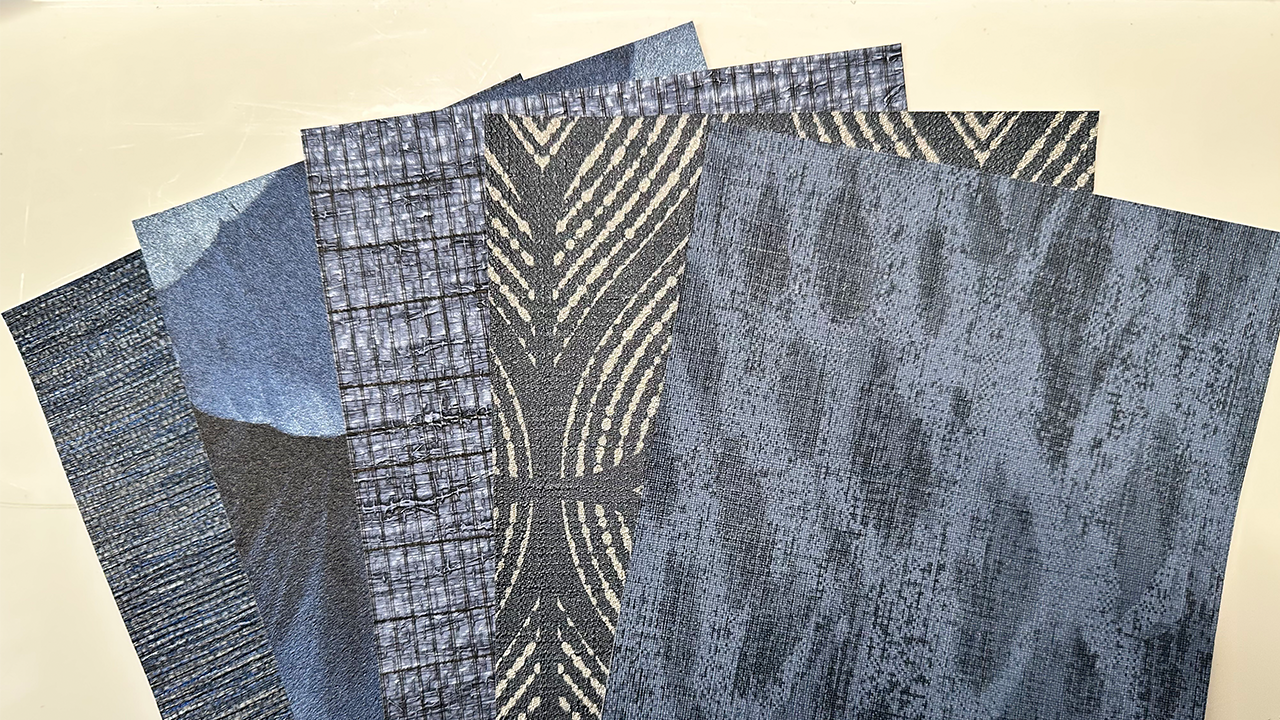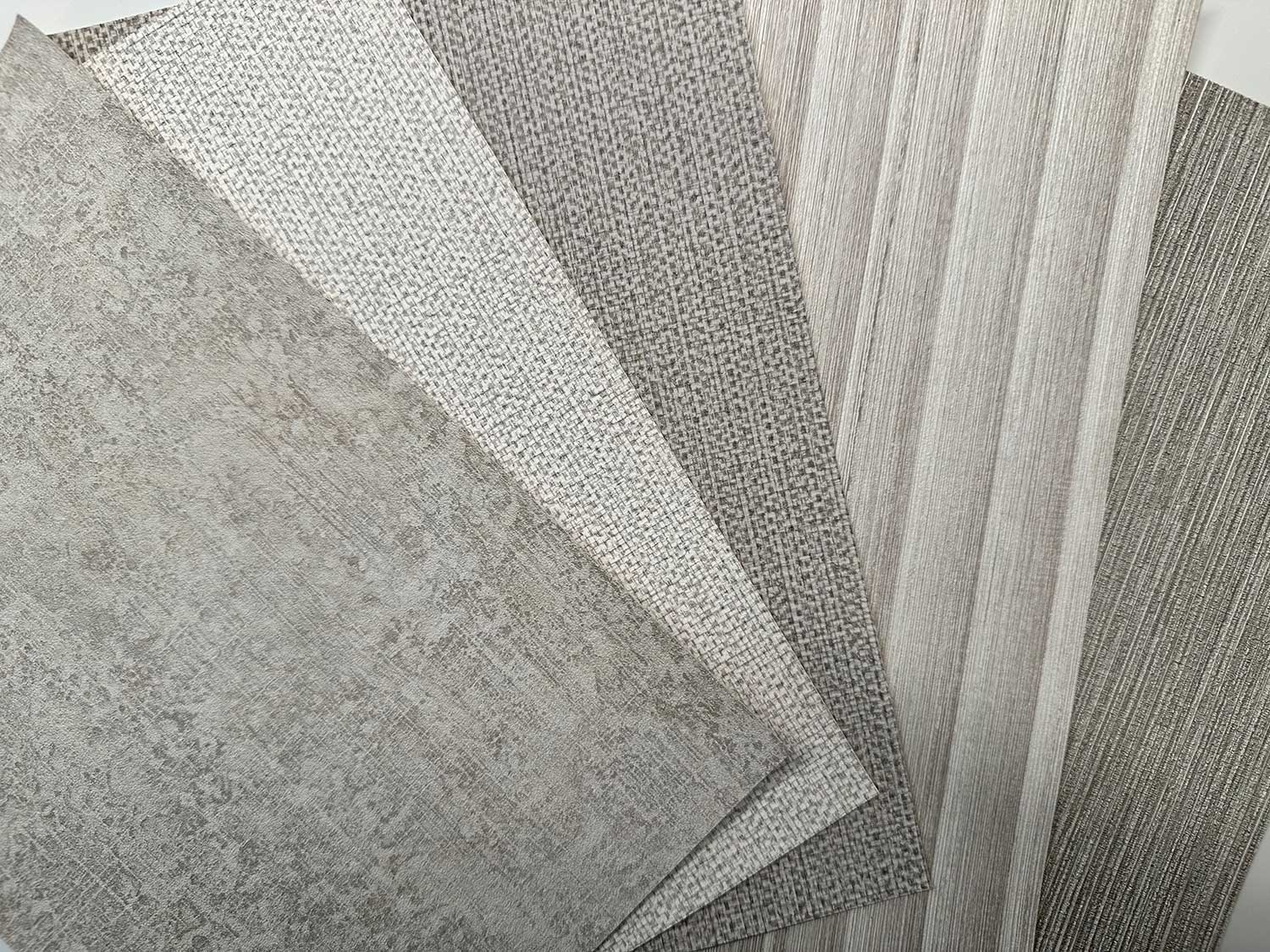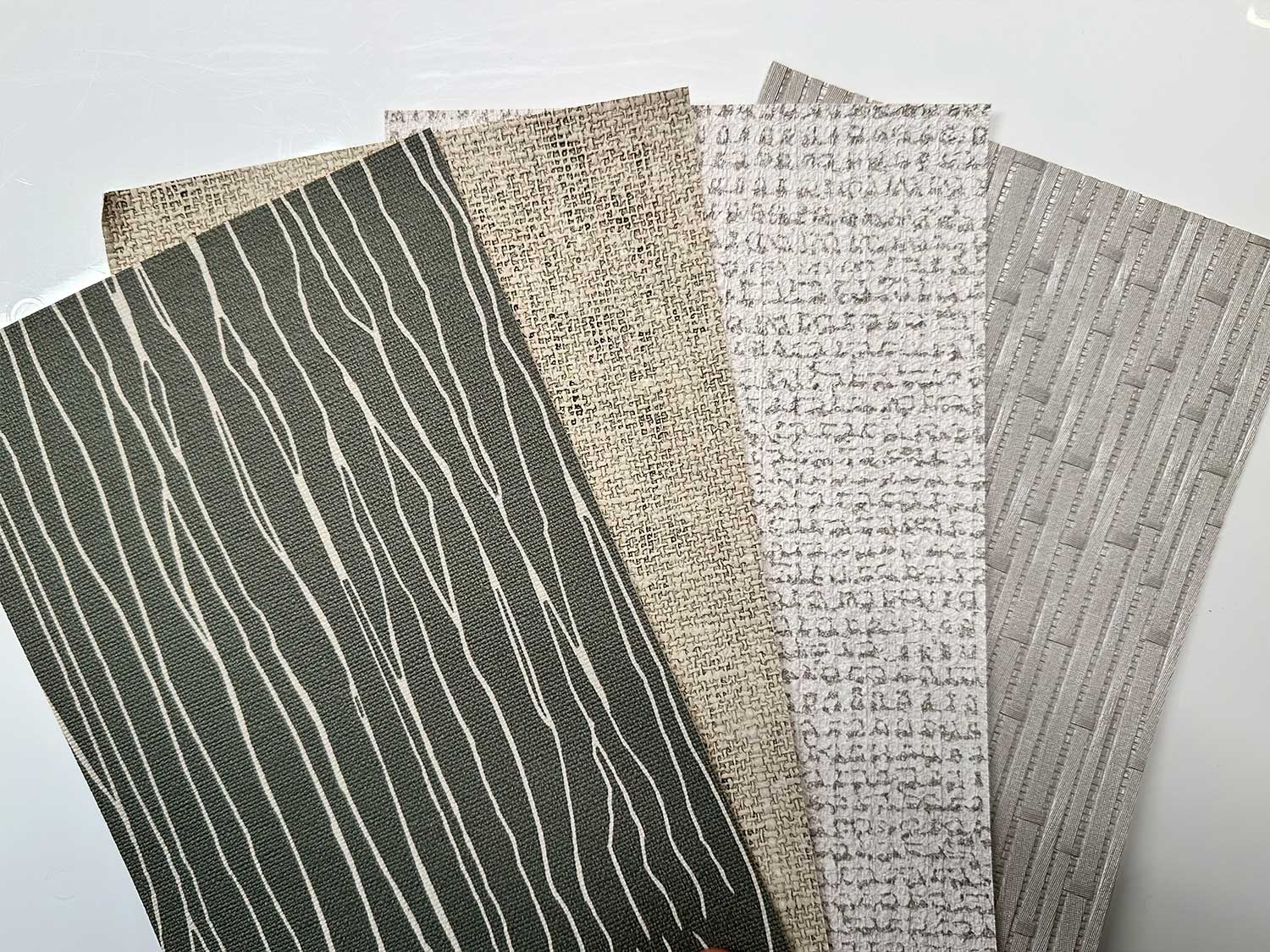
Types of Wallcovering
There are three types of commercial vinyl wallcovering on the market today. The main difference between all three types is the weight per linear yard. Type 1 (used in light-to-moderate traffic areas) weighs up to 19 oz, while Type 2 (most common for public spaces) weighs over 20 oz and Type 3 (used in the most high-traffic areas) weighs over 30 oz.
ALine specifies Type 2 (and in some cases Type 3) wallcovering in all of our common area redesign projects because of the following benefits:
Durability & Wall Protection
Because Type 2 is thicker than Type 1, it endures abrasion better and holds up longer than Type 1, especially in heavy traffic areas. This is the number one reason why Type 2 vinyl wallcovering is so common in hotel and residential hallways throughout the US and beyond. Luckily for us, the patterns and color options are endless, making vinyl look more appealing to residential public spaces.
Little to No Maintenance
Aside from occasional dusting and wiping, maintenance should not be needed unless the wallcovering has been damaged. We always provide attic stock for your building to keep on hand.
Washability
Basic cleaners are great for cleaning off any spots or smudges. Because Type 2 wallcovering is color fast, it can be scrubbed heavily without fading or deteriorating, but you should always check the manufacturer’s recommendations for specific stains.
Hides Imperfections
Type 2 wallcovering more easily camouflages wall blemishes due to its heavy weight material and its ability to support a deeper emboss. The finish of the wallcovering also has an impact on the ability to cover wall damage. Medium/dark and duller finishes tend to camouflage any wall imperfections better than shiny, light finishes. In general, smoother and light weight wallcoverings reflect imperfections, making them easier to notice.
Type 3 wallcovering is the most durable and is specified in the highest traffic areas like hospitals. It is usually unnecessary for condominium and co-op hallway and lobby spaces, however, some rental buildings have recently begun installing Type 3 in their hallways due to the frequent turnover. According to one of our vendors, Type 3 wallcovering seems to be slowly gaining popularity in residential applications as well, but is more limited in options than Type 2.
Recommendations When Considering Wallcovering For Your Hallways or Common Areas
1. Verify that the General Contractor Has Experience Installing Type 2 Wallcovering
This seems simple enough however our wallcovering vendors consistently receive frantic calls from customers stating that the wallcovering is not sticking to the wall. This issue is not related to the wallcovering, but rather the installer. There are a number of “paper hangers” that can perfectly install Type 1 wallpaper without any problems. However, Type 2 wallcovering is totally different from Type 1 and requires a different method of application and expertise.
2. Choose a Timeless Wallcovering
The redesign of your common space is intended to last a decade or two and possibly longer. Therefore, it’s imperative to choose a wallcovering that will still be relevant and appealing in several years. Installing a neutral wallcovering allows us to play with fun accents like a feature wall or cool carpet pattern.
3. Avoid Textile and Silk Wallcoverings
These materials are fairly difficult to maintain. There are many Type 2 vinyl wallcovering options that look like textiles and/or silks but do not require the same maintenance.


Wallpaper / Wallcovering Trends & Industry Innovations
As the popularity of wallpaper rises again, creators are increasingly pushing the boundaries, especially in residential applications. There are constantly new wallpapers coming out including some really cool handmade wallpapers. Not to mention, wallpaper is being made of all kinds of materials including glass beads and believe it not, shells! While wallpaper is in the midst of a serious comeback, wallcovering continues to prevail as the standard for residential and commercial public spaces particularly in hallways. In recent years, there has been a trend towards custom wallcovering. This is especially true for condominiums and cooperatives which have a multitude of differing opinions to appease.
As of late, most Boards/Design Committees lean towards classic wallcovering with a neutral scheme in the cool color ranges like grays and taupes. They also tend to prefer textured wallcovering that resembles fabrics and that is not overly trendy. Many are steering clear of beige color schemes and glossy finishes. However, some shiny finishes seem to be having a revival.

